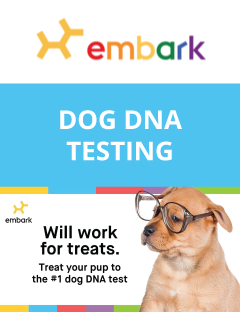Therapeutic Laser

By Cory Pinel, DVM, DACVS-SA
As a veterinary surgeon, there are very few patients that I see that could not benefit from a reduction in pain, lessening of inflammation, and increased speed of wound healing. In many situations, finding a safe AND effective solution is not easy. While “go-to” or “tried-and-tested” medications like non-steroidal anti-inflammatory drugs (NSAIDs) such as Rimadyl, do a great job of helping the situation, not every patient can tolerate these medications. While the evidence is growing that a benefit exists in using these medications long-term, sometimes they are not enough. In other situations, like wound or bone healing, these medications may actually have a detrimental effect and it may be better to use them sparingly. Enter the therapeutic laser.
Laser is an acronym standing for Light Amplification by Stimulated Emission of Radiation. Lasers exist just about everywhere, but are used in health care as either a surgical (i.e. “cutting”) laser or as a therapeutic laser. Within therapy lasers, there are low level lasers and high intensity lasers. The higher intensity lasers (such as Wheat Ridge Animal Hospital’s Class IV/LiteCure unit) are more powerful – allowing greater depth of tissue penetration and shorter treatment times.
Simply put, laser is nothing but light. A very specific wavelength of light (red and near infrared), but light none the less. What is remarkable about laser therapy is that scientists recognized many years ago that certain organelles within cells can respond to supplemental light. They are termed chromophores and are present in just about all cells. When cells are supplemented with light energy and this energy is absorbed, several changes occur. Those effects are split into photothermal (i.e. heating) and photochemical (i.e. biochemical). The photothermal effects generally produce some warmth during the treatments, but most people/pets sense this as a pleasant sensation. Some people/pets with a high concentration of pigment or melanin within their skin can get higher skin temperatures due to greater absorption, but we can manage this by simply moving the treatment probe quickly over the skin. The healing is caused by the photochemical effects.
Absorption of light energy by chromophores increases the cellular activity and “turns-on” healing cells. In the process, laser therapy produces 10 primary biologic benefits:
- Relieves Pain (Analgesia) – this is done through activation of acupuncture points, releasing the body’s own pain relievers (endorphins), causing muscle relaxation.
- Reduces Inflammation – increased circulation and reduction in inflammatory hormones at the cellular level.
- Accelerates Tissue Repair and Cell Growth – cells are stimulated to make more energy, divide quicker, produce more repair hormones, etc. This is especially true in regeneration of nerves, cartilage, bone, and in superficial wound healing, both early and late (scar tissue).
- Improves Circulation – new blood vessels are encouraged to grow through the process of angiogenesis. This is useful in mobilizing bruising, resorbing hematomas, and bringing blood flow into regions of chronic healing or degeneration.
- Increases Cellular Metabolism – long-term or chronically diseased tissue (i.e. osteoarthritis) has a very low cellular metabolic rate; the laser helps to “wake up” these tissues.
- Reduces Scar Formation – with an increased rate of healing, less reliance on thick scars is needed for wound healing. Old scars may also be encouraged to remodel to more elastic and stronger tissue with laser light.
- Improves Nerve Function – for animals with neurologic disease or damage this can be very useful to speed healing and allow for a more complete recovery. This is also useful for pain management as nervous dysfunction can create chronically painful states.
- Accelerates Wound Healing – as mentioned above, cells that are more efficient, with better blood supply, and more energy will heal quicker. This may allow patients to get through the recovery period after surgery or trauma faster than without treatment.
- Boosts the Immune System – antibodies and white blood cells will enter tissues quicker. Lasers also have an antimicrobial effect which can help to clear infection quicker either without or in complement to antibiotic therapy.
- Stimulates Acupuncture and Trigger Points – acupuncture serves to mechanically stimulate certain tissues and nerves; laser can do the same thing, but with light and no needles! Trigger points are similar to muscle knots. Laser creates muscle relaxation and can treat both acute and chronic trigger point pain.
A typical treatment is performed within three to six minutes per site. Multiple sites are able to be treated back-to-back and the animals generally tolerate them very well. Humans comment that the warmth and massage from the probe is comforting and pleasant. In fact, there really is very little risk or adverse effects from the treatment. There is some risk to the retinas if the laser is directly shone in the eyes, so everyone, including the patient, wears eye protection specifically designed to filter out the laser’s wavelength of light. Due to the increase in cellular activity and blood flow, locations with known cancer should not be treated.
In acute situations (lacerations, muscle strains, skin infections, post-surgery incisions, etc.) one or two treatments are enough to get the effects we desire. In more chronic situations, it can take six to ten treatments to see improvement. In these cases, the goal is not to cure the patient’s illness, but to provide pain relief, encourage healing, and improve their quality of life. After improvement is noted, treatments can be spaced out and most animals will continue on a maintenance plan to keep them comfortable for as long as needed.
If your pet is experiencing pain, inflammation, or needs assistance healing, then they may be a candidate for laser therapy. Ask your veterinarian for more information about this exciting new technology.
Wheat Ridge Animal Hospital
Website: www.wheatridgeanimal.com
Phone: 303-424-3325







